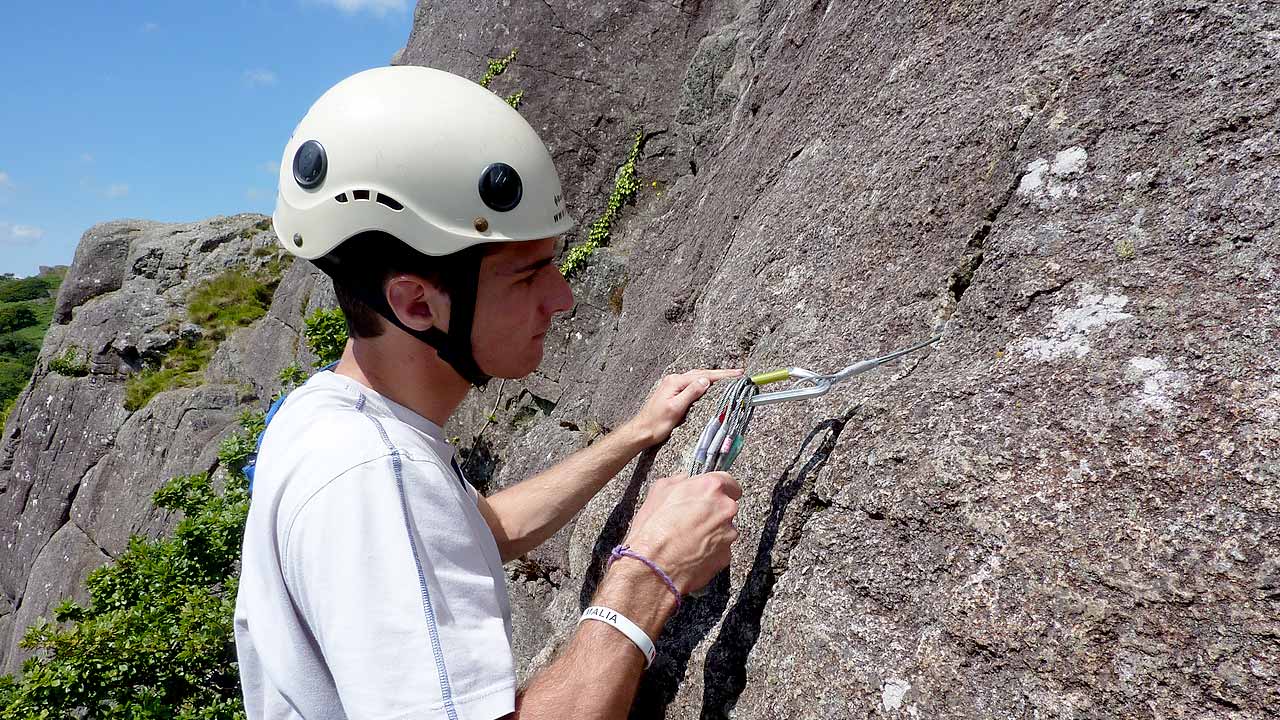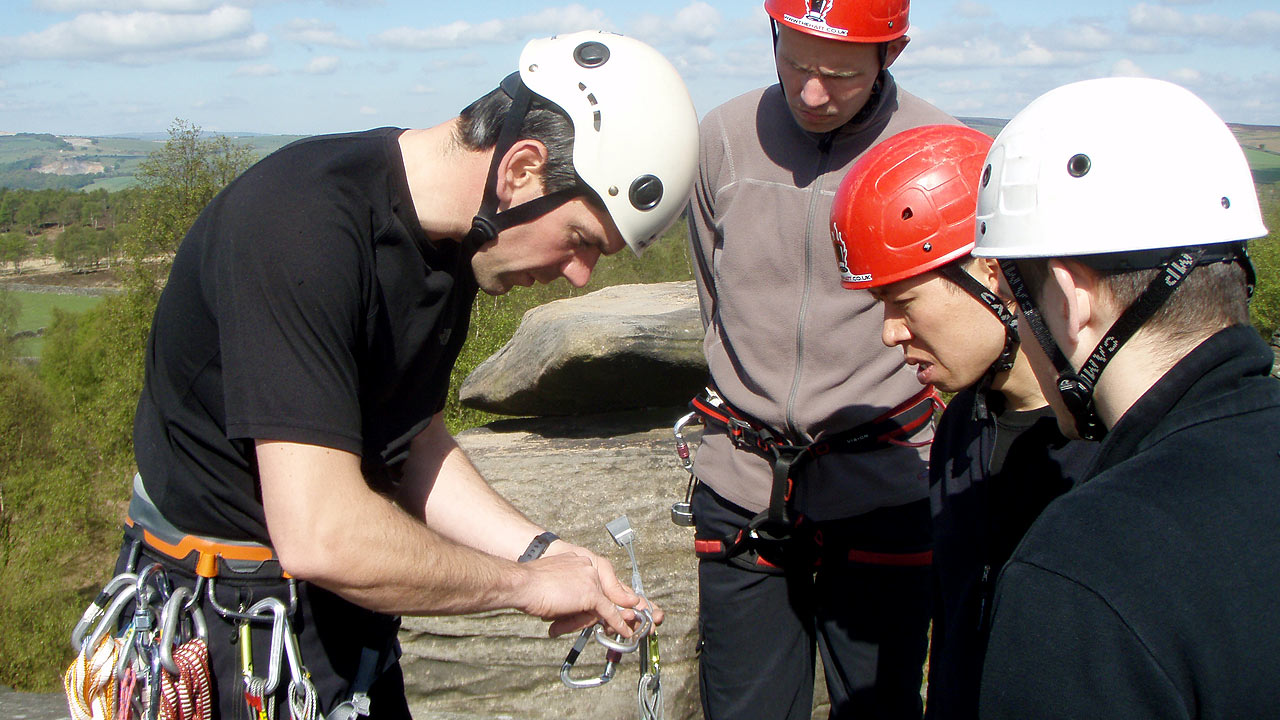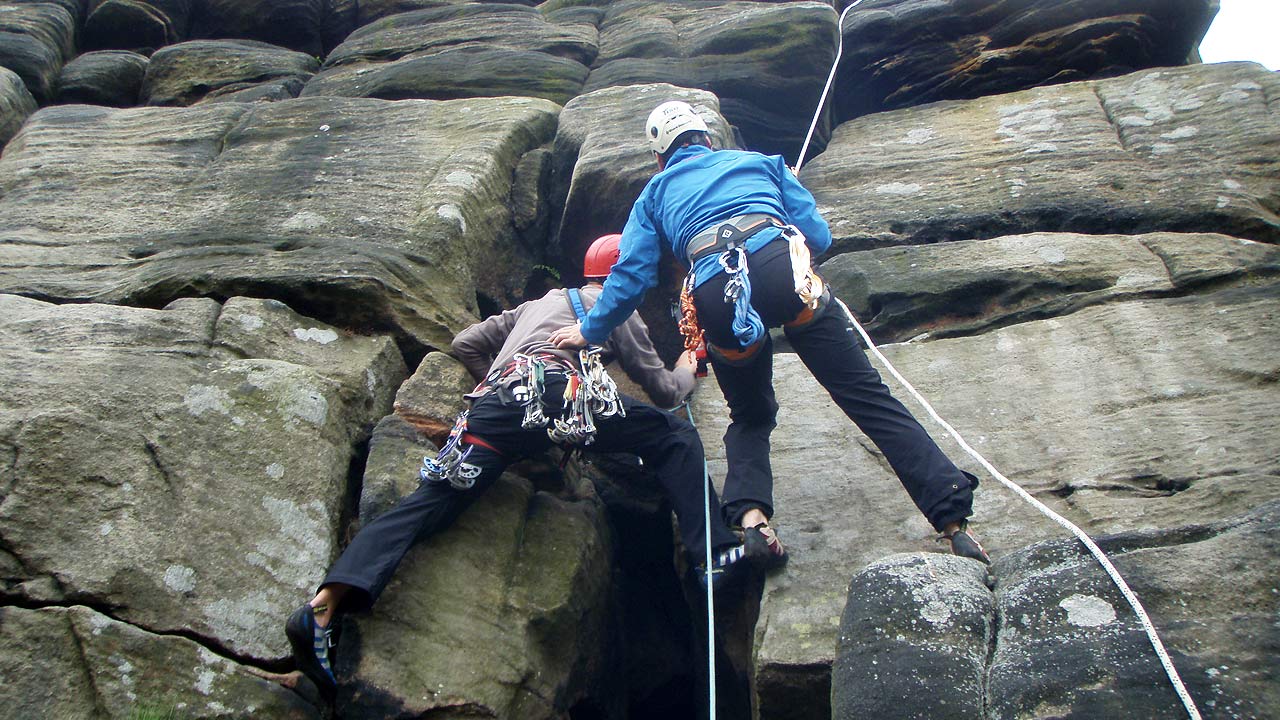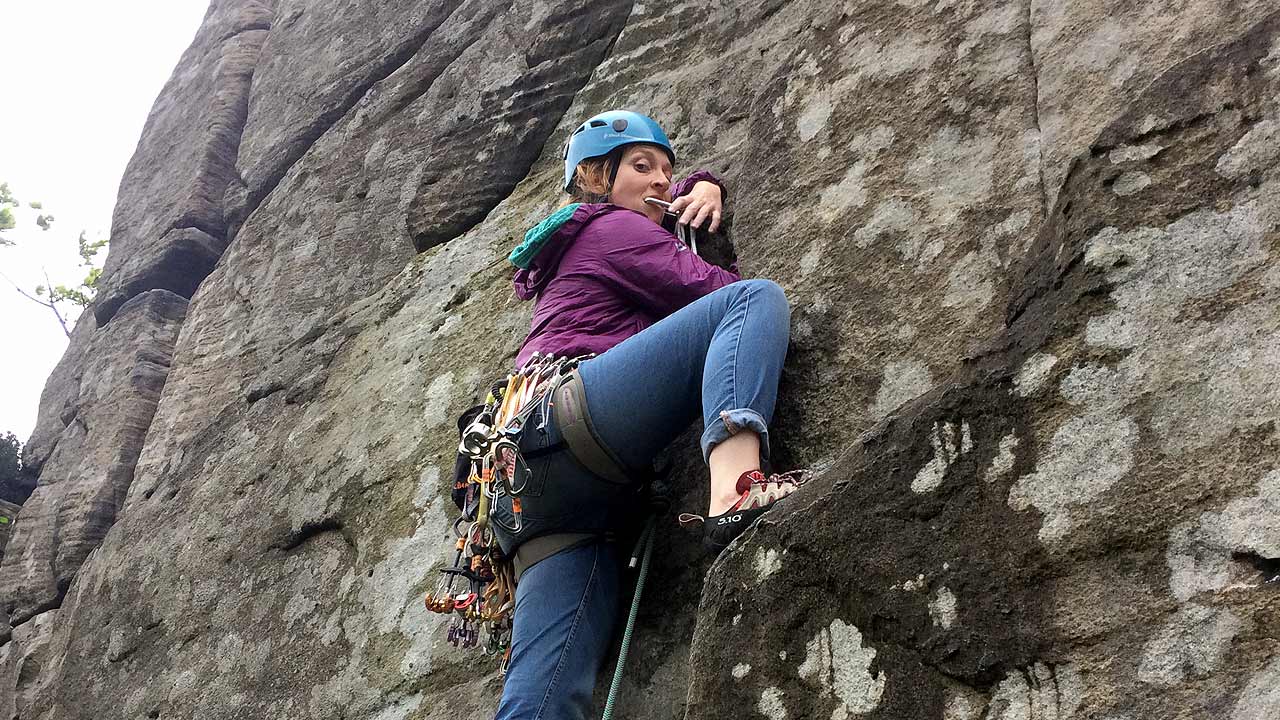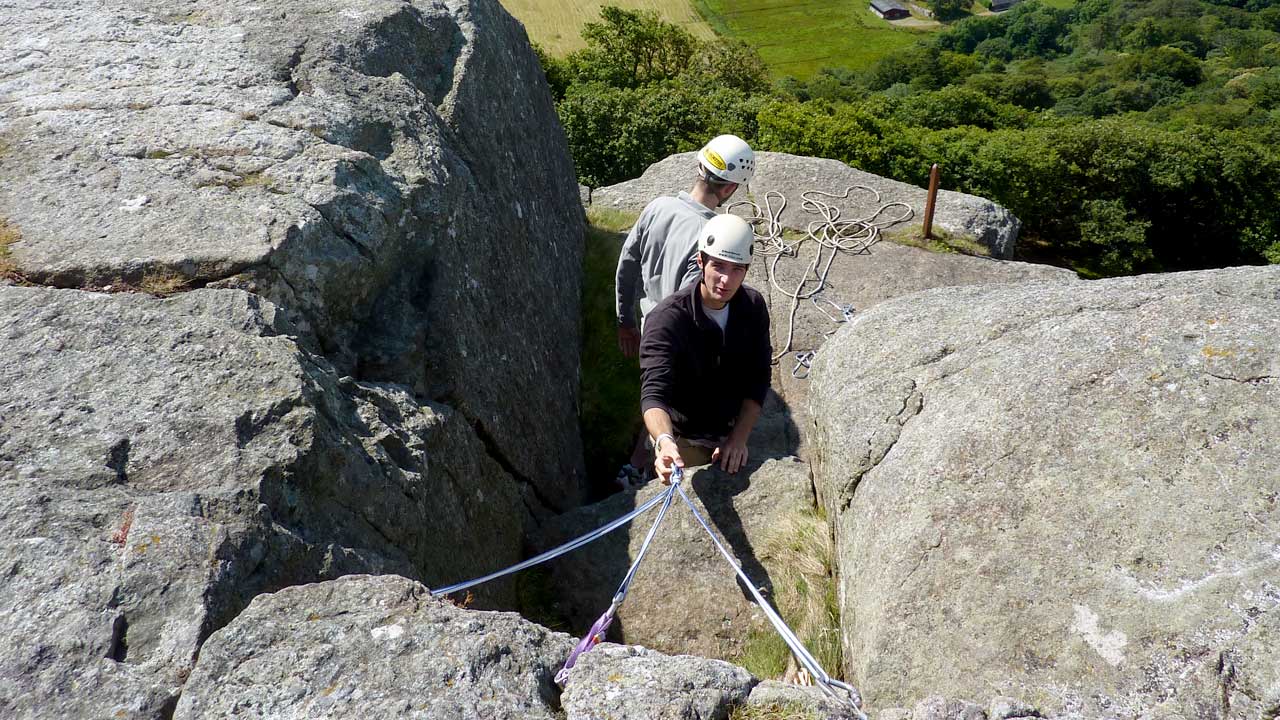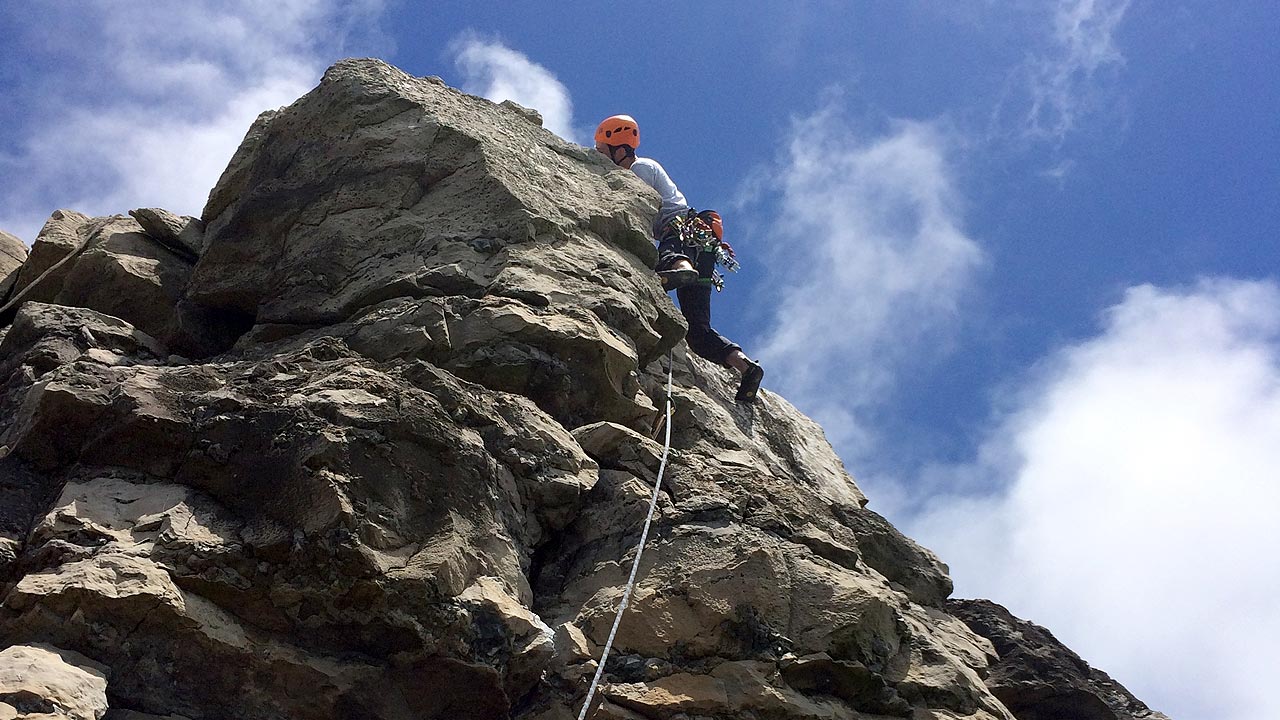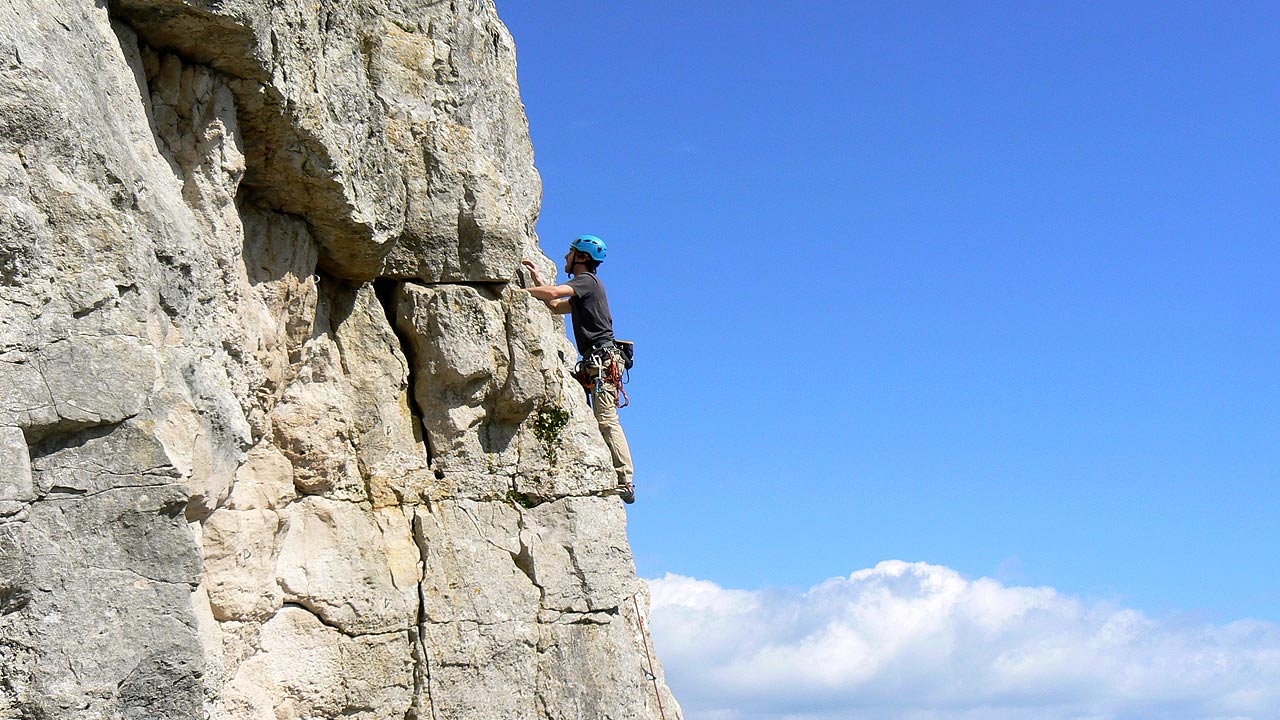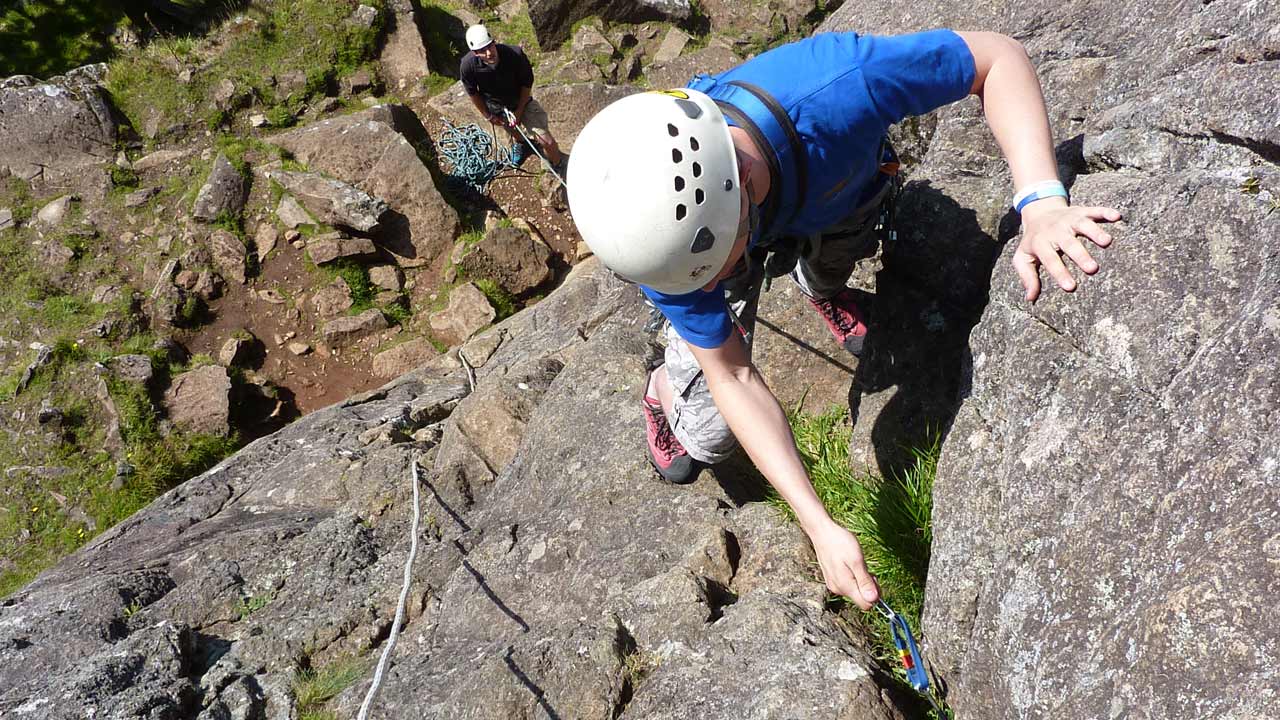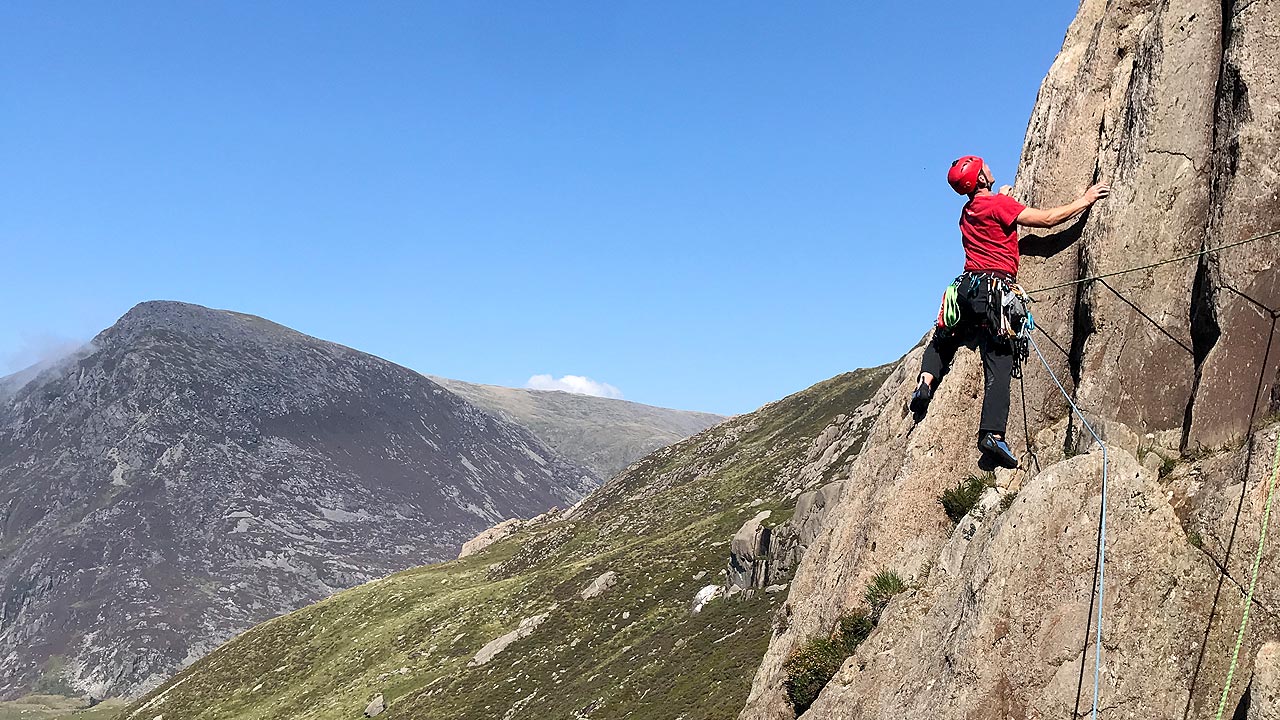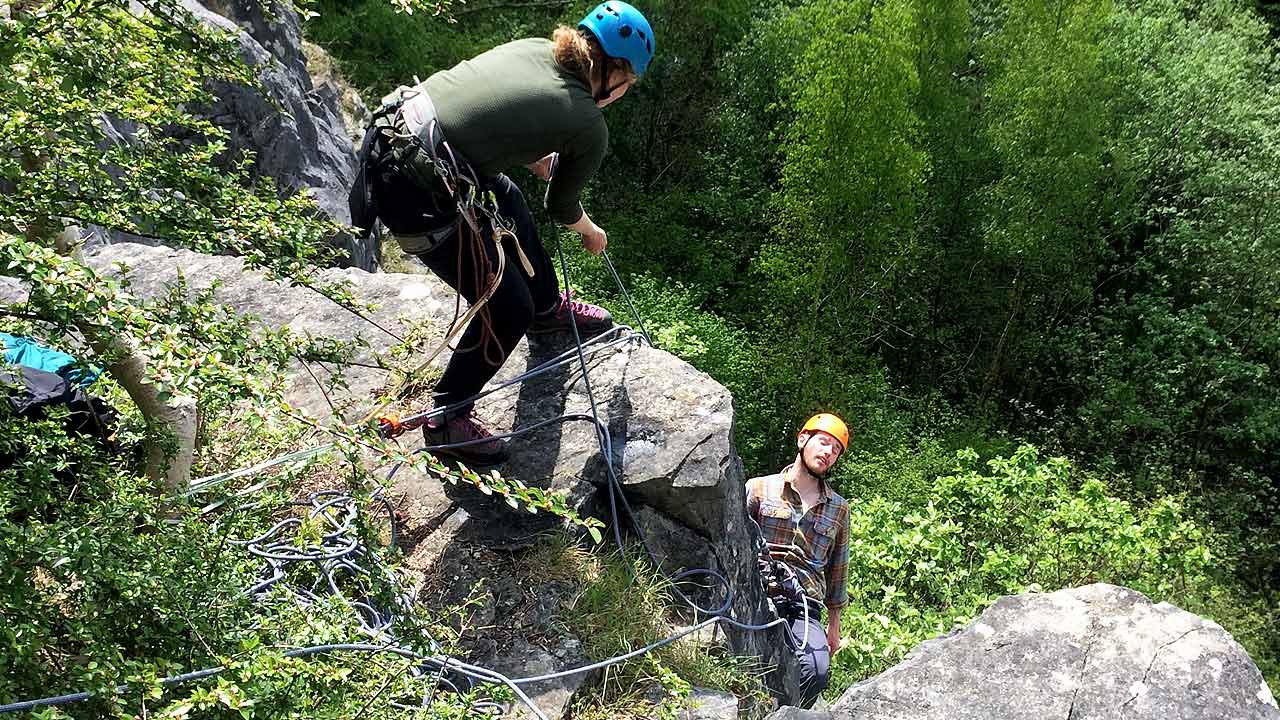Learn to Trad Lead Climb
Lead climbing is an art, knowing where to place protection (nuts, cams, hexes etc), seeking out good anchors, creating a belay stance and bringing up your second, all confidently and efficiently takes precision and awesome teaching. Luckily, we have the instructors for you.
Our expert instructors will build your confidence and knowledge at your pace, giving you peace of mind. They will also teach you how to protect yourself on abseils should you need to descend to the base of a route, (sea cliffs) or to retrieve a piece of gear that you brilliantly secured in the rock, so much so your second can’t get it out.
There are some fantastic climbing areas across the UK which we can recommend depending on your style of climbing if you’re looking for a certain rock type or just fancy a bit of change of scenery. Some of our most popular locations are, Peak District, Dorset and the Lakes.
By the end of this course, you will have the skills and the confidence to climb safely at the sharp end of the rope. But, if 2 days of climbing just isn’t enough for you then you can jump on our 5 Day Lead Climbing Course instead, this would be perfect for anyone who hasn’t seconded that much and wants to take more time working on their skills as they learn to lead. Or you could combine this course with either our Self Rescue or Multi-Pitch Climbing courses to make a week long trip. This will really boost your skills and confidence to have some awesome climbs without an instructor.
Information
Season
March to October
Duration
2 Days
Group Size
2-4
Restrictions
Minimum age: 18 Max weight: 18 stone (115kg).
Aim
To learn how to lead climb on traditionally placed climbing gear, construct belay stances and protect an abseil.
Who is it for?
Those with previous climbing experience. Anyone wishing to lead climb on single pitch crags.
Prerequisites
You must be able to safely and confidently belay. To benefit most from this course you should be able to climb to an English 4b/c standard, and recommend that you have some 'seconding' or sport climbing experience.
Accepting Risk
By its very nature lead climbing increases the risk of serious personal injury in the event of a fall. By booking this course you accept this risk.
YOU WILL BE REQUIRED TO LEAD ROCK CLIMBS USING LEADER PLACED PROTECTION, AND SECOND OTHERS. This is, potentially, a dangerous activity with the risk of serious injury or death. You may take falls onto equipment placed by you but not checked by us. It is impossible for us to guarantee your safety at all times, as sometimes you may be out of our direct control. If you feel unhappy about any of this, please DO NOT join the course. More information is available if you require it. Hatt Adventures will not accept liability for accidents/injuries in such cases unless CLEARLY due to their negligence.
For more info. please see our Terms & Conditions.
Itinerary
The course is structured according to the needs of the group, and progression will be guided by our experienced instructor, but a typical course would look like:
Day 1 - 'Second' a lead climb, assess your rope and climbing skills, selecting anchors, building belays, lead climb on a top rope.
Day 2 - More lead climbing, self protected abseils, equipment maintenance and avoiding problems.
Skills Covered
- Using guide books
- Route selection
- Communication on crags
- Equipment selection
- Anchors and runners
- Removing protection
- Setting up a belay stance
- Self protected abseiling
- Equipment safety and maintenance
Locations
Courses can be held in a number of climbing locations throughout the UK
Equipment
Equipment supplied
Trad climbing and safety equipment is supplied including:
- Trad lead rack
- Ropes
Equipment needed
You will need your own personal climbing kit including harness and climbing shoes (these can be provided on request although personal kit will benefit you more).
For all outdoor climbing courses you must have extra warm clothes and waterproofs, we will provide you with a full kit list upon booking.
- Comfortable clothing, suitable for the time of year*
- Waterproof jacket and trousers
- Approach shoes / trainers**
- Climbing shoes
- Harness
- Helmet
- Belay device and carabiner
- Rucksack (approx. 40-50ltr)
- Packed lunch and plenty of water
- Medication / Tablets / Inhaler etc.
- LEAD RACK (CLIMBING KIT)
- If you would like to bring your own climbing rack, please follow the guidance notes below:
- Rope (50m minimum) - must be less than 10yrs old and you must know its history
- Quickdraws - must be less than 10yrs old and you must know its history
- Extendable runners (x4-6) - 60cm slings and snap gate carabiners
- Nuts - set of 1-10
- Hex’s / Torque Nuts - (x3-4) Cams - (x3-4) - mixed sizes
- Slings (x3-4) mixed sizes (60-120cm) plus (x1) large (240cm)
- Screw gate carabiners (x3) Nut key
The above list is just a guide and appropriate clothing for the time of year should be worn.
*Clothing should comprise of several layers to trap the warmth. Please do not wear denim as it restricts movement, is cold when wet and is slow to dry.
**For the walk-ins we’d recommend sturdy approach shoes or trainers with a substantial tread should be worn. Walking boots can be a good option but if we’re attempting long routes and climbing with kit they’ll be very heavy to carry.
Please remember the crags can be a fair walk or scramble from the car park, so it important to put all of your kit in a suitable size rucksack leaving space for climbing equipment.
Equipment shop
Take a look at our online shop for any equipment you might want for your outdoor adventures. We stock a variety of equipment and can give expert advice if you have any queries. Choose to collect your order on a course (free of charge) and your instructor will have it ready and waiting for you when you arrive.
Transport
To reduce the environmental impact, we actively encourage people to lift share where possible. Our instructors may be able to share transport from Brighton, London and the South East, or we will meet at the venue.
